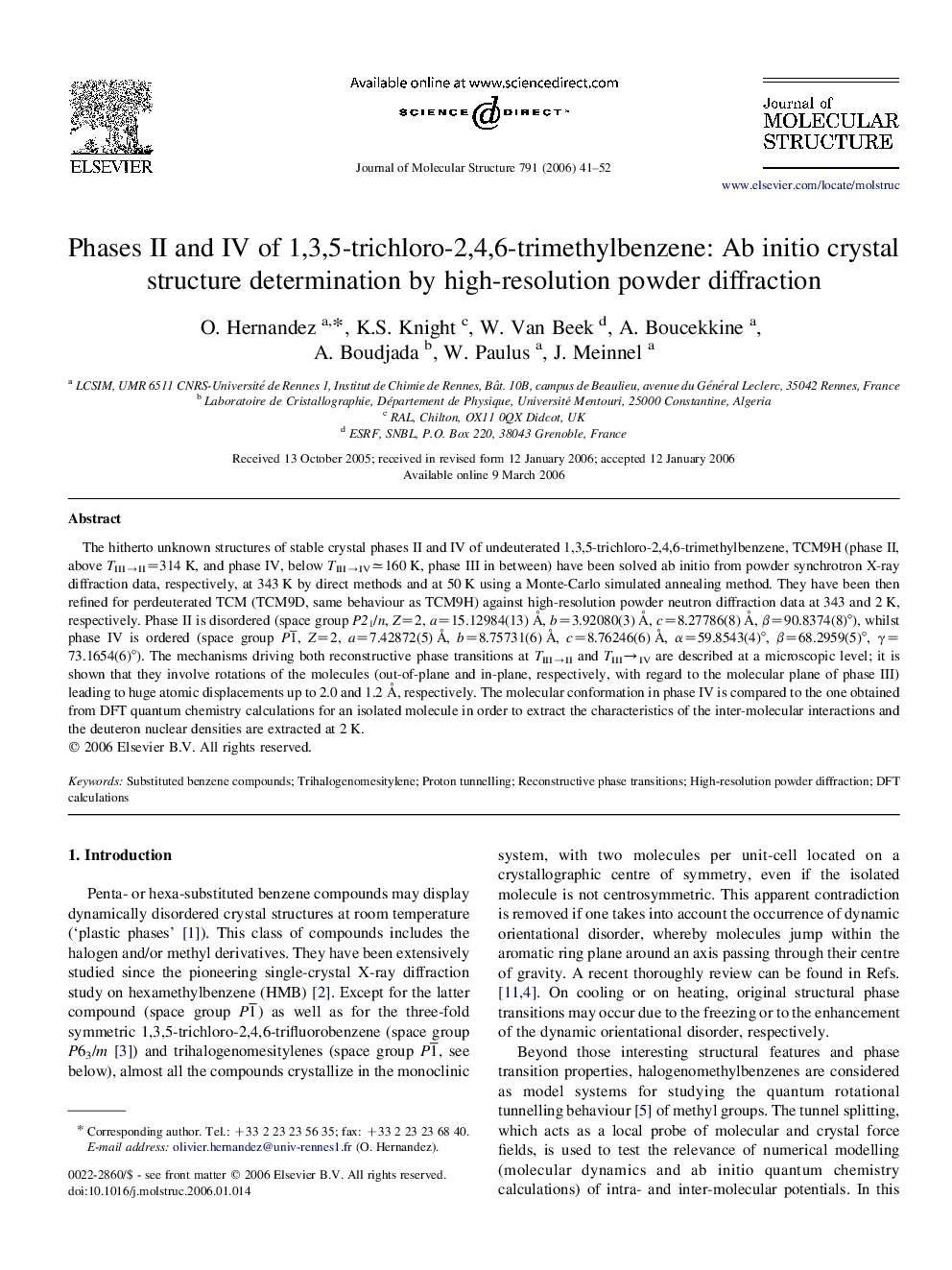| Article ID | Journal | Published Year | Pages | File Type |
|---|---|---|---|---|
| 1404641 | Journal of Molecular Structure | 2006 | 12 Pages |
Abstract
The hitherto unknown structures of stable crystal phases II and IV of undeuterated 1,3,5-trichloro-2,4,6-trimethylbenzene, TCM9H (phase II, above TIIIâII=314Â K, and phase IV, below TIIIâIVâ160Â K, phase III in between) have been solved ab initio from powder synchrotron X-ray diffraction data, respectively, at 343Â K by direct methods and at 50Â K using a Monte-Carlo simulated annealing method. They have been then refined for perdeuterated TCM (TCM9D, same behaviour as TCM9H) against highâresolution powder neutron diffraction data at 343 and 2Â K, respectively. Phase II is disordered (space group P21/n, Z=2, a=15.12984(13)Â Ã
, b=3.92080(3)Â Ã
, c=8.27786(8)Â Ã
, β=90.8374(8)°), whilst phase IV is ordered (space group P1¯, Z=2, a=7.42872(5) Ã
, b=8.75731(6)Â Ã
, c=8.76246(6)Â Ã
, α=59.8543(4)°, β=68.2959(5)°, γ=73.1654(6)°). The mechanisms driving both reconstructive phase transitions at TIIIâII and TIIIâIV are described at a microscopic level; it is shown that they involve rotations of the molecules (out-of-plane and in-plane, respectively, with regard to the molecular plane of phase III) leading to huge atomic displacements up to 2.0 and 1.2 Ã
, respectively. The molecular conformation in phase IV is compared to the one obtained from DFT quantum chemistry calculations for an isolated molecule in order to extract the characteristics of the inter-molecular interactions and the deuteron nuclear densities are extracted at 2Â K.
Keywords
Related Topics
Physical Sciences and Engineering
Chemistry
Organic Chemistry
Authors
O. Hernandez, K.S. Knight, W. Van Beek, A. Boucekkine, A. Boudjada, W. Paulus, J. Meinnel,
